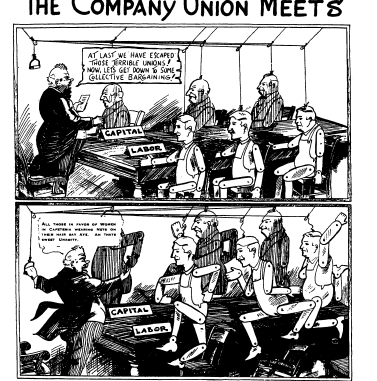
Estimated reading time: 5 minutes
The business unions of the U.S.-Canadian capitalist empire lurch on in their undead torpor, incapable of winning any but the most cringing and cowering economic victories from the triumphant capitalists that command the field. Occasional rumblings in the anarchist-leaning “left” will call for a general strike of workers (and sometimes, when they are particularly incoherent, of consumers). “All it would take to bring down the capitalist government is for every worker to militantly agree to go on strike at the same time, to resist police attack, and to prevent those negligible few who would work for the bosses from making it into the workplace!” they cry.
That’s all it would take, indeed.
For any debate-bro logicheads, this ludicrous argument has a very simple and identifiable error. It’s called begging the question. Certainly, all it would take to bring down the capitalist order is a coordinated assault, the execution of a few key government officials and particularly awful capitalist robber-barons, the expropriation of their land and wealth, the establishment of a socialist legality and decolonial government, etc., etc. A simple matter!
The question is hidden. What would it require for every worker to militantly agree to go on strike, resist police attack, and prevent scabs from working? Why, not much. Only a total revolutionization of the labor movement.
Only the creation of a centrally coordinating body. Only the joining together of the various labor struggles into a militant political party of labor.
The primary weapon of the working class is organization. Each individual capitalist commands an enormous number of resources. Each capitalist firm is itself an organization designed to marshal and control those resources. When we confront these massive accretions of capital, of political power, of physical repressive violence, we confront them alone and singly unless we are organized. A single strike requires local organization; a mass strike requires mass organization across the entire economy. For a strike against one of the capitalist behemoths that now stand behind the U.S.-Canadian governments, that strike must attack all the bases of the capitalist firm at once. That cannot be done without a high degree of organization. But we cannot organize against capital from within the labor unions until the labor unions themselves are won back from their current class-collaborationist leadership.
We can identify, then, the series of steps needed to break the stranglehold of the labor bureaucrats — those who speak revolution yet perform obeisance to capitalist leadership like Sean Fain, and those who don’t speak revolution at all — on the labor unions. These are the very first and necessary steps toward any question of a mass strike.
- Active revolutionists — those people now calling for a general strike every so often on the internet, as well as those trained Marxists within the unions who are truly revolutionary — in short, the radical union members, must begin the task of propagandizing and agitating to the rank-and-file, bringing them to the understanding that they are being betrayed by their leadership;
- Radical union members must form internal organizations capable of challenging the stifling rules and the environment of anti-democratic suppression that now surrounds the election of union leaders and determination of union policy;
- These organizations must engage in the sharpest possible struggle against their internal union enemies — the labor bureaucrats — and force the addition of new rules to their constitutions, namely: i) thorough and democratic discussion on every issue, with the membership being permitted to pass dictates to its officers, ii) recall provisions for treacherous officers and other officials, iii) caps on officer salaries to be no more than three times the average rank-and-file salary, iv) completely clearing out all current elected officials and employees of the union and replacing them with radical members.
Only when this struggle is won in at least a number of major unions can we begin to discuss formation of a mass strike committee and the enactment of a general strike across all industries in the U.S.-Canadian empire.
This work can be begun in an uncoordinated fashion. Small cliques and groups of revolutionists within the labor movement can start the undertaking. However, for it to coalesce into a general strike, these cliques and groups must coalesce into the form of a dedicated, militant, revolutionary party of labor; a Communist party.
